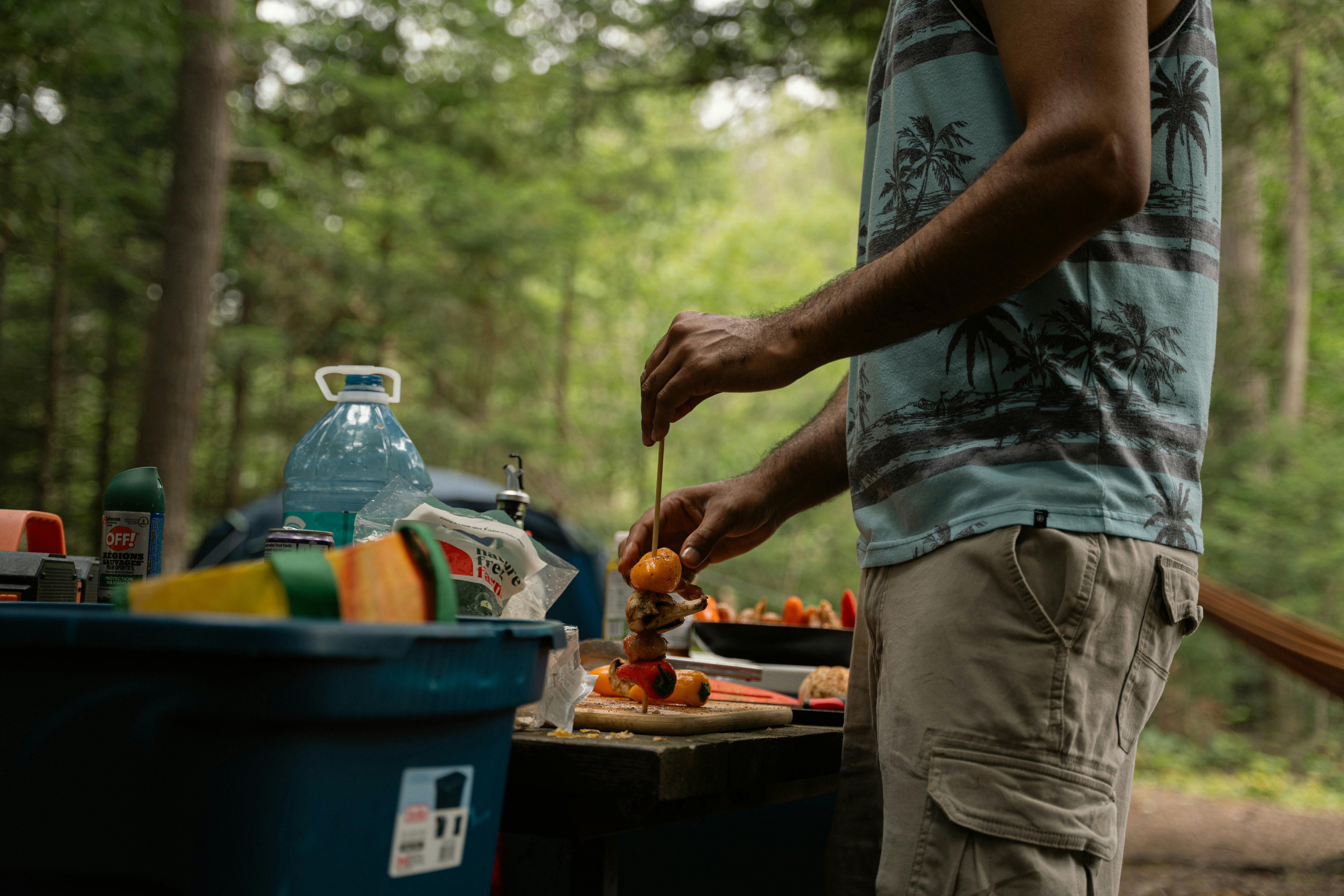

You're deep in the woods, surrounded by towering trees, the scent of pine in the air. The fire crackles, sending sparks dancing into the night sky.
Your food sizzles over the embers, filling the campsite with a rich, smoky aroma. Now, ask yourself—would this experience be the same with a gas fire pit?
If you’re an outdoor enthusiast who loves cooking while camping, you've likely faced the "wood vs. gas" dilemma. Which one is better? Which one cooks food more deliciously? Which is safer, more convenient, and cost-effective? Let’s dive into the flames and find out!
Cooking over a fire pit isn’t just about making food—it’s about the experience.
A fire pit provides warmth, light, and an ambiance that brings people together. Whether you're roasting marshmallows, grilling a fresh catch, or slow-cooking a stew, fire pits offer a versatile and enjoyable way to cook in the great outdoors. But when it comes to choosing between wood and gas, the decision isn’t as simple as it seems.
| Aspect | Wood Fire Pits | Gas Fire Pits |
|---|---|---|
| How They Work for Cooking | Burn logs or charcoal. Cook over flames, embers, or in cast iron. Great for grilling, roasting, slow-cooking with natural heat variations. | Fueled by propane or natural gas. Instant, adjustable flames. Delivers quick, even heat for controlled cooking. |
| Ease of Control | Requires patience and skill. Managing logs, airflow, and waiting for embers takes time—but it’s part of the adventure. | Instant control with a knob. Switch between high flame and low simmer in seconds. |
| Convenience | Involves firewood gathering, arranging logs, and flame-tending. Many campers see this as a meaningful part of the experience. | Lights instantly. No firewood, no flame management. Ideal for quick setups and hassle-free evenings. |
| Safety | More risk of uncontrolled flames and flying embers. Needs supervision, proper setup, and awareness of fire safety zones. | No sparks or embers. Cleaner and more contained. Gas safety depends on proper handling and leak prevention. |
| Cost Considerations | Low to no cost if collecting wood; buying firewood costs ~$5–$10 per bundle. Minimal ongoing expenses if managed well. | Higher running costs. A 20 lb propane tank ($30–$50) lasts 6–8 hours on high. Refills can add up with frequent use. |
| Practicality & Setup While Camping | Lighter and easy to pack, but requires a steady supply of fuel. Wood is often free and abundant in the wild. Setup takes effort but adds to the experience. | Requires carrying bulky propane tanks. Setup is fast and easy, but depends on pre-purchased fuel. Less spontaneous, more plug-and-play. |
Cooking over wood isn’t just practical—it’s primal. The crackling sound, the smoky scent, the dancing flames—these elements create an immersive experience that gas simply can’t replicate. Plus, there’s an undeniable satisfaction in mastering the art of fire-building.
Throughout history, people have gathered around wood fires to cook, tell stories, and
bond. There’s something deeply human about tending a fire, waiting for the perfect embers, and savoring the results. Cooking is just the start—it’s the atmosphere that makes it special.
Ultimately, the choice between wood and gas fire pits depends on your priorities. Gas fire pits offer instant flames and effortless control, making them a convenient option. However, if you cherish the traditional charm of wood fire cooking—the crackling flames, the smoky aroma, and the rich flavors — nothing quite compares.
That said, traditional wood fire pits come with their own challenges: they can be bulky, difficult to transport, smoky, and hard to control. This is where innovations like the FYBORN Fire Pit change the game. Designed for modern adventurers, FYBORN is compact, folding down to just 3 inches in height for easy portability. Unlike traditional pits, it features 64 air vents and a powerful air booster system that ensures optimal airflow for an efficient, nearly smokeless burn. Safety is enhanced with its stable design and controlled combustion system, making it a reliable choice for responsible campers. More than just a fire pit, FYBORN also functions as a pizza oven and grill, reaching up to 500°C to cook
restaurant-quality meals in minutes. For those who want the immersive experience of wood fire cooking without the usual downsides, FYBORN offers a perfect balance of portability, efficiency, and tradition.
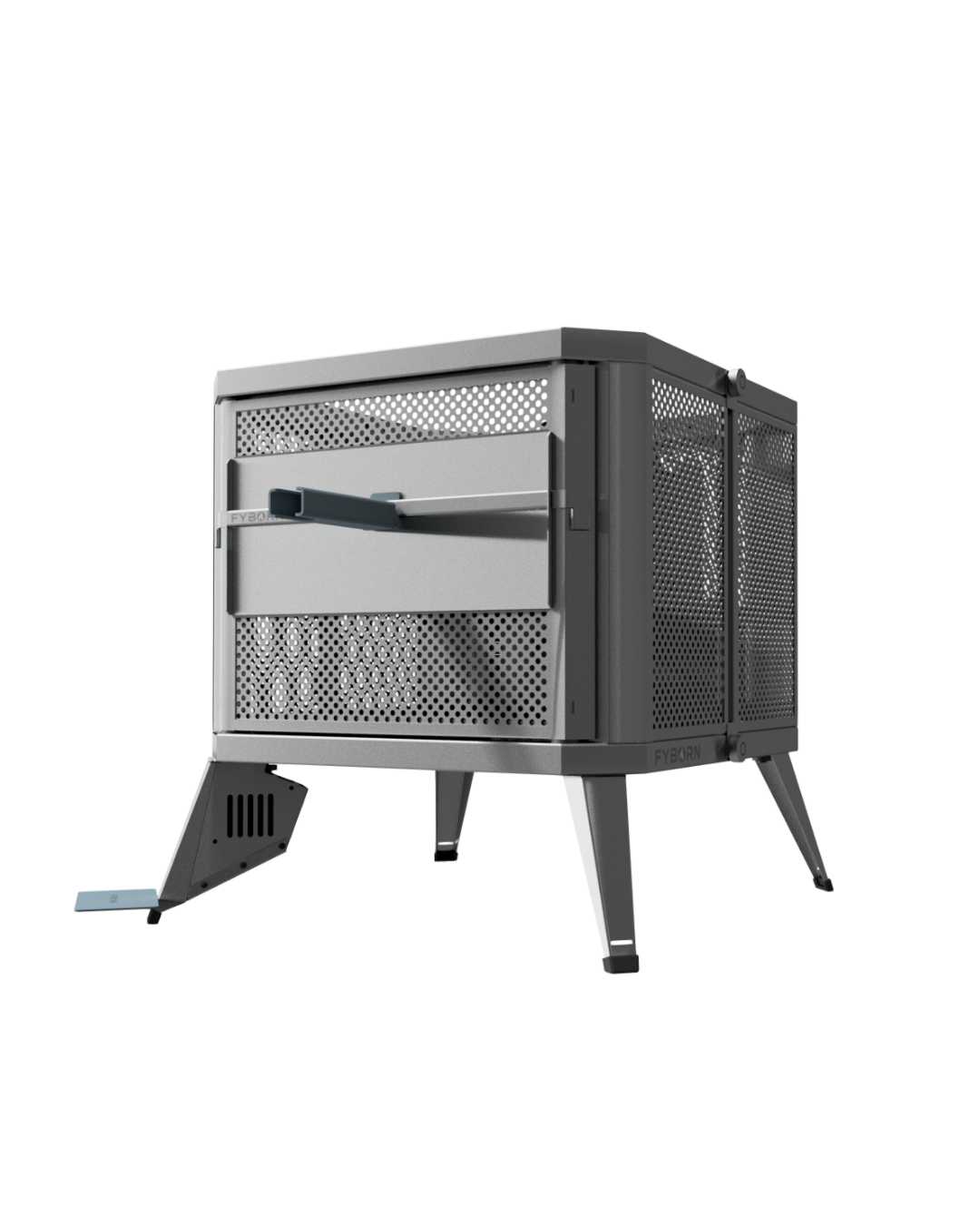
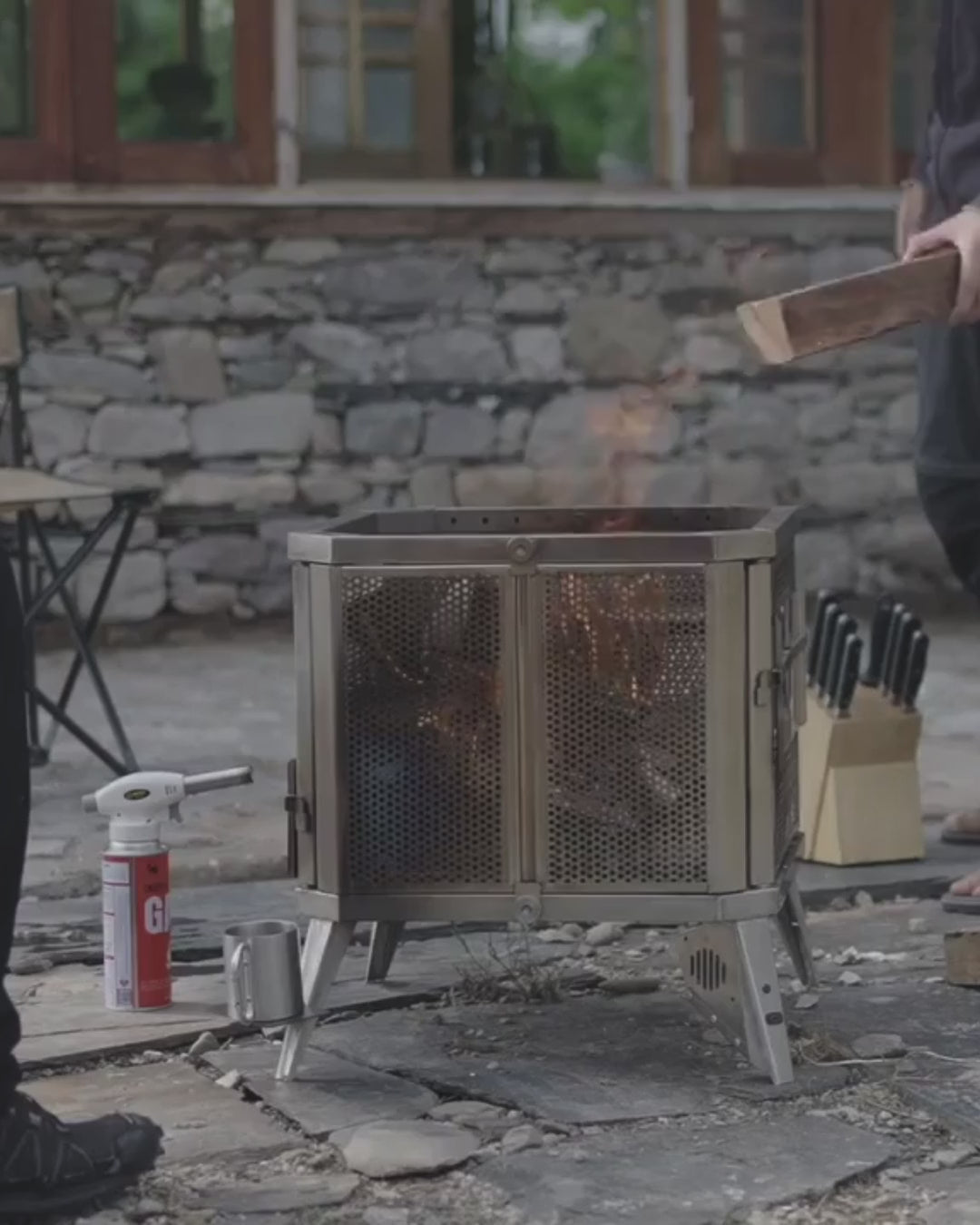
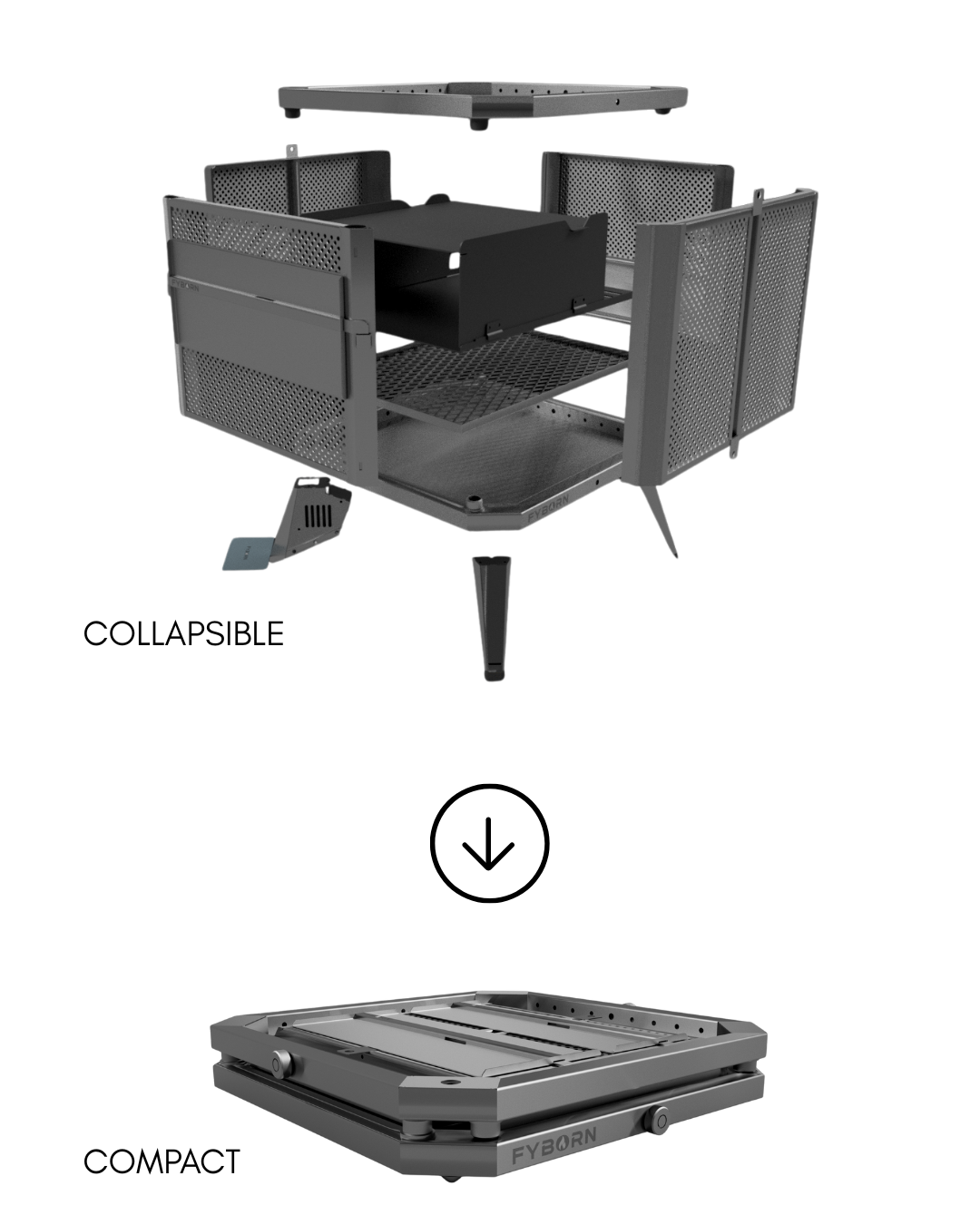
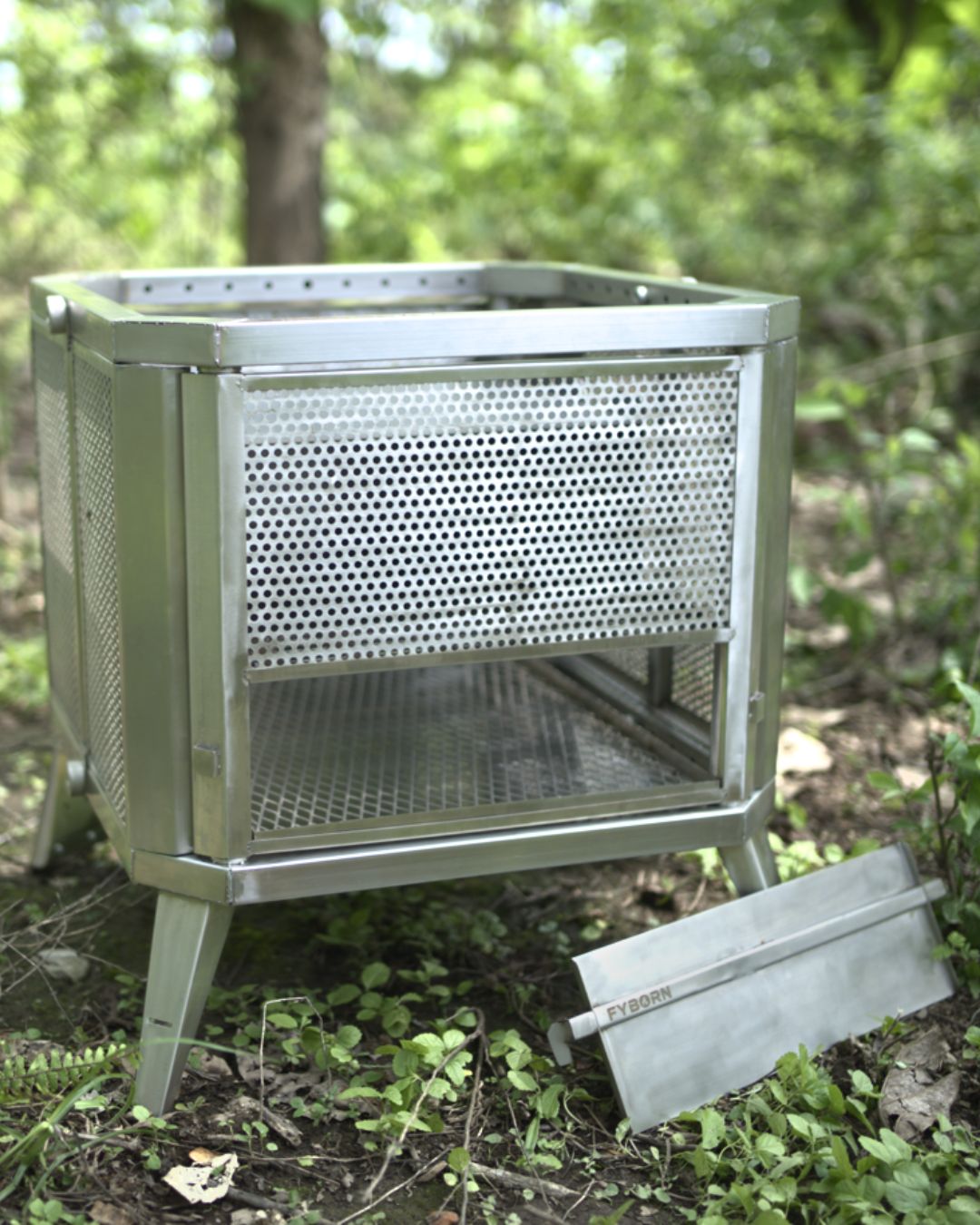
A foldable fire pit that lets you grill over open flames and bake wood-fired pizzas in the great outdoors.
A full-sized 19.5” fire pit that folds down to just 3.5”—compact enough to fit under your seat, powerful enough to take over your night.
Share:
Premium Fire Pits vs. Budget Fire Pits: What’s Worth It?